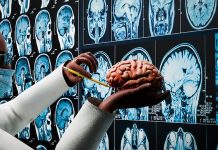
In a new study, researchers found that monitoring stiffness of tissue near a patient’s thyroid while they sing can help to detect tumors.
The finding suggests singing may be the next-generation, noninvasive approach to determining the health of a patient’s thyroid.
The research was conducted by a team from Université de Tours and elsewhere.
Typically, a fine needle is used to detect the presence of a tumor in the thyroid, which most commonly affects children and younger women.
However, this method can only detect about 5% of thyroid cancers.
When a person sings, the vibrations from their voice create waves in the tissue near the vocal tract called shear waves.
If a tumor is present in the thyroid, the elasticity of its surrounding tissue increases, stiffening, and causing the shear waves to accelerate.
In the study, the team used ultrasound imaging to measure the speed of these waves, the researchers can determine the elasticity of the thyroid tissue.
This method, which the authors call vocal passive elastography, is an extension of passive elastography, a shear wave propagation tracking technique used in seismology.
Because the elasticity of biological tissues depends on the speed of the shear waves, by asking a volunteer to sing and maintain an “eeee” sound at 150 hertz, approximately the frequency of D3, the group was able to characterize the thyroid and find any abnormally stiff areas.
This test is very quick and easy. It requires no specialized or complex equipment added to the ultrasound scanner and only needs about one second of data acquisition to complete.
Analyzing the data is the longest step, but a computer program that the team developed does the computation automatically.
The group is working on improving the user-friendliness of the computer interface and potentially expanding the test to include other areas near the vocal tract, such as the brain.
One author of the study is Steve Beuve.
The study is published in Applied Physics Letters.
Copyright © 2021 Knowridge Science Report. All rights reserved.



